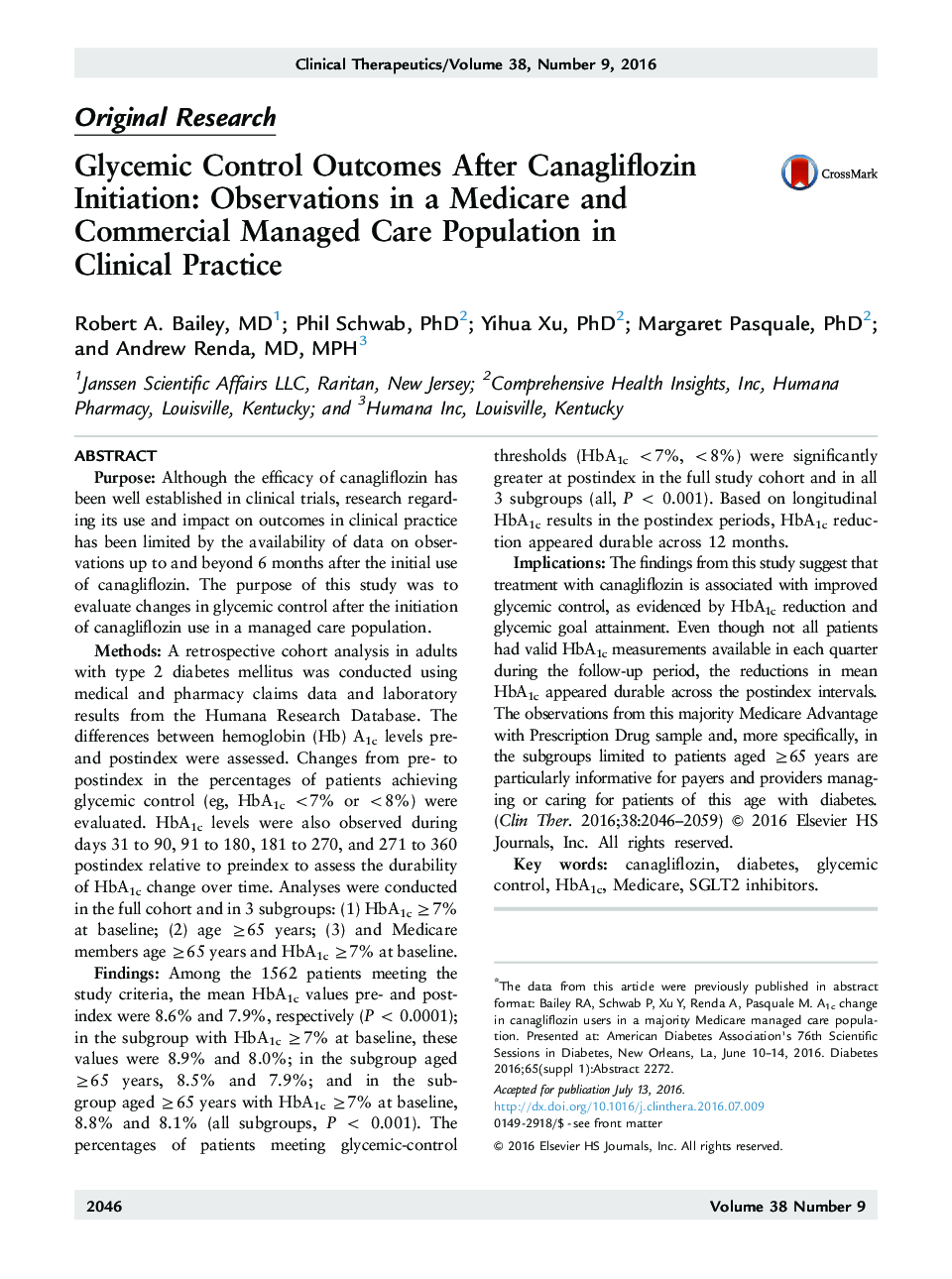| کد مقاله | کد نشریه | سال انتشار | مقاله انگلیسی | نسخه تمام متن |
|---|---|---|---|---|
| 5554222 | 1403027 | 2016 | 14 صفحه PDF | دانلود رایگان |
PurposeAlthough the efficacy of canagliflozin has been well established in clinical trials, research regarding its use and impact on outcomes in clinical practice has been limited by the availability of data on observations up to and beyond 6 months after the initial use of canagliflozin. The purpose of this study was to evaluate changes in glycemic control after the initiation of canagliflozin use in a managed care population.MethodsA retrospective cohort analysis in adults with type 2 diabetes mellitus was conducted using medical and pharmacy claims data and laboratory results from the Humana Research Database. The differences between hemoglobin (Hb) A1c levels pre- and postindex were assessed. Changes from pre- to postindex in the percentages of patients achieving glycemic control (eg, HbA1c <7% or <8%) were evaluated. HbA1c levels were also observed during days 31 to 90, 91 to 180, 181 to 270, and 271 to 360 postindex relative to preindex to assess the durability of HbA1c change over time. Analyses were conducted in the full cohort and in 3 subgroups: (1) HbA1c â¥7% at baseline; (2) age â¥65 years; (3) and Medicare members age â¥65 years and HbA1c â¥7% at baseline.FindingsAmong the 1562 patients meeting the study criteria, the mean HbA1c values pre- and postindex were 8.6% and 7.9%, respectively (P < 0.0001); in the subgroup with HbA1c â¥7% at baseline, these values were 8.9% and 8.0%; in the subgroup aged â¥65 years, 8.5% and 7.9%; and in the subgroup aged â¥65 years with HbA1c â¥7% at baseline, 8.8% and 8.1% (all subgroups, P < 0.001). The percentages of patients meeting glycemic-control thresholds (HbA1c <7%, <8%) were significantly greater at postindex in the full study cohort and in all 3 subgroups (all, P < 0.001). Based on longitudinal HbA1c results in the postindex periods, HbA1c reduction appeared durable across 12 months.ImplicationsThe findings from this study suggest that treatment with canagliflozin is associated with improved glycemic control, as evidenced by HbA1c reduction and glycemic goal attainment. Even though not all patients had valid HbA1c measurements available in each quarter during the follow-up period, the reductions in mean HbA1c appeared durable across the postindex intervals. The observations from this majority Medicare Advantage with Prescription Drug sample and, more specifically, in the subgroups limited to patients aged â¥65 years are particularly informative for payers and providers managing or caring for patients of this age with diabetes.
Journal: Clinical Therapeutics - Volume 38, Issue 9, September 2016, Pages 2046-2057.e2
